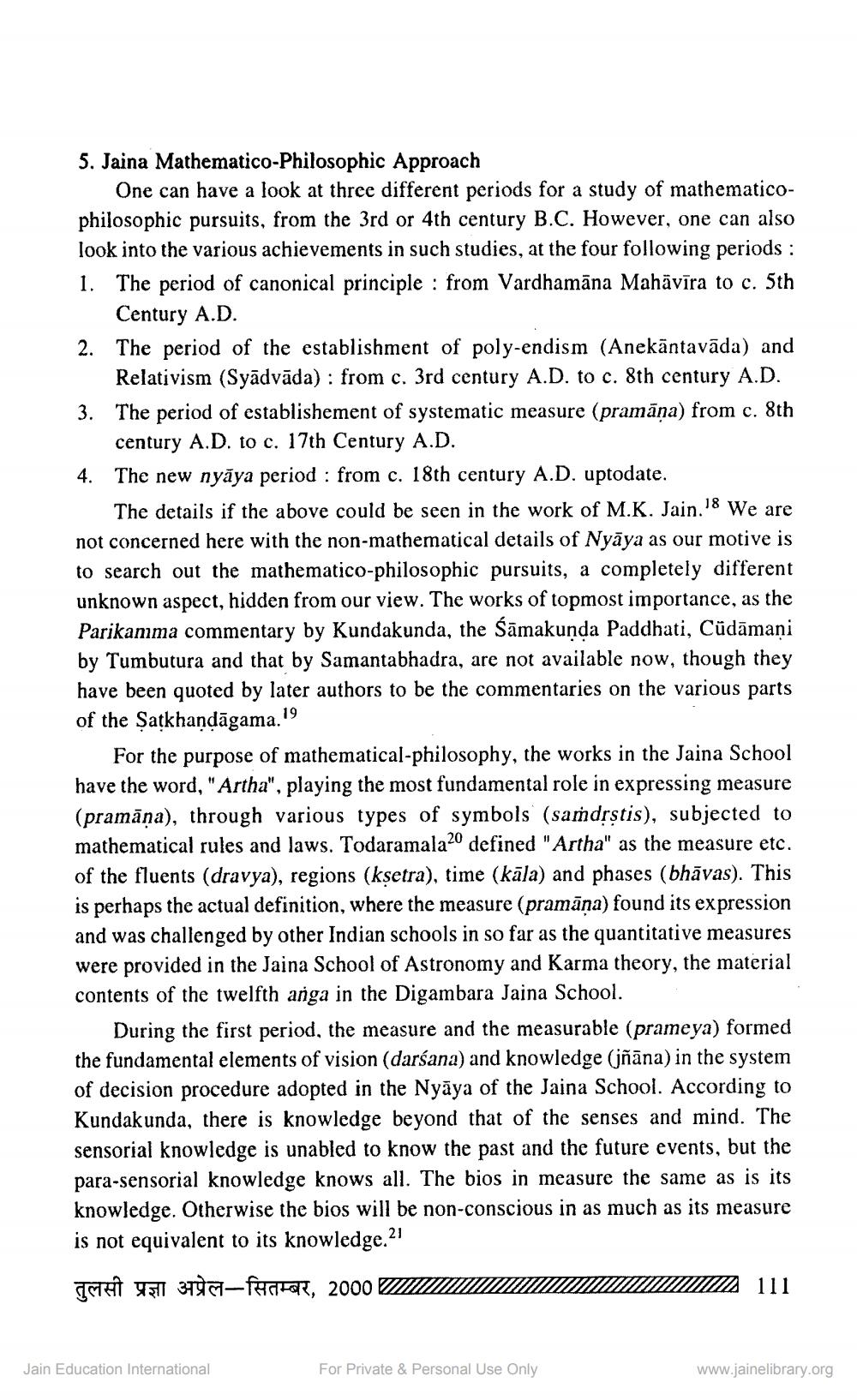________________
5. Jaina Mathematico-Philosophic Approach
One can have a look at three different periods for a study of mathematicophilosophic pursuits, from the 3rd or 4th century B.C. However, one can also look into the various achievements in such studies, at the four following periods: 1. The period of canonical principle from Vardhamana Mahāvīra to c. 5th Century A.D.
2. The period of the establishment of poly-endism (Anekāntavāda) and Relativism (Syadvāda): from c. 3rd century A.D. to c. 8th century A.D. 3. The period of establishement of systematic measure (pramāṇa) from c. 8th century A.D. to c. 17th Century A.D.
4. The new nyaya period: from c. 18th century A.D. uptodate.
18
The details if the above could be seen in the work of M.K. Jain. We are not concerned here with the non-mathematical details of Nyaya as our motive is to search out the mathematico-philosophic pursuits, a completely different unknown aspect, hidden from our view. The works of topmost importance, as the Parikamma commentary by Kundakunda, the Śamakunda Paddhati, Cüdāmaṇi by Tumbutura and that by Samantabhadra, are not available now, though they have been quoted by later authors to be the commentaries on the various parts of the Satkhandagama.19
For the purpose of mathematical-philosophy, the works in the Jaina School have the word, "Artha", playing the most fundamental role in expressing measure (pramāṇa), through various types of symbols (samdrṣtis), subjected to mathematical rules and laws. Todaramala20 defined "Artha" as the measure etc. of the fluents (dravya), regions (kṣetra), time (kāla) and phases (bhāvas). This is perhaps the actual definition, where the measure (pramāṇa) found its expression and was challenged by other Indian schools in so far as the quantitative measures were provided in the Jaina School of Astronomy and Karma theory, the material contents of the twelfth anga in the Digambara Jaina School.
During the first period, the measure and the measurable (prameya) formed the fundamental elements of vision (darśana) and knowledge (jñāna) in the system of decision procedure adopted in the Nyaya of the Jaina School. According to Kundakunda, there is knowledge beyond that of the senses and mind. The sensorial knowledge is unabled to know the past and the future events, but the para-sensorial knowledge knows all. The bios in measure the same as is its knowledge. Otherwise the bios will be non-conscious in as much as its measure is not equivalent to its knowledge.2
21
तुलसी प्रज्ञा अप्रेल - सितम्बर, 2000 2017
Jain Education International
For Private & Personal Use Only
111
www.jainelibrary.org




